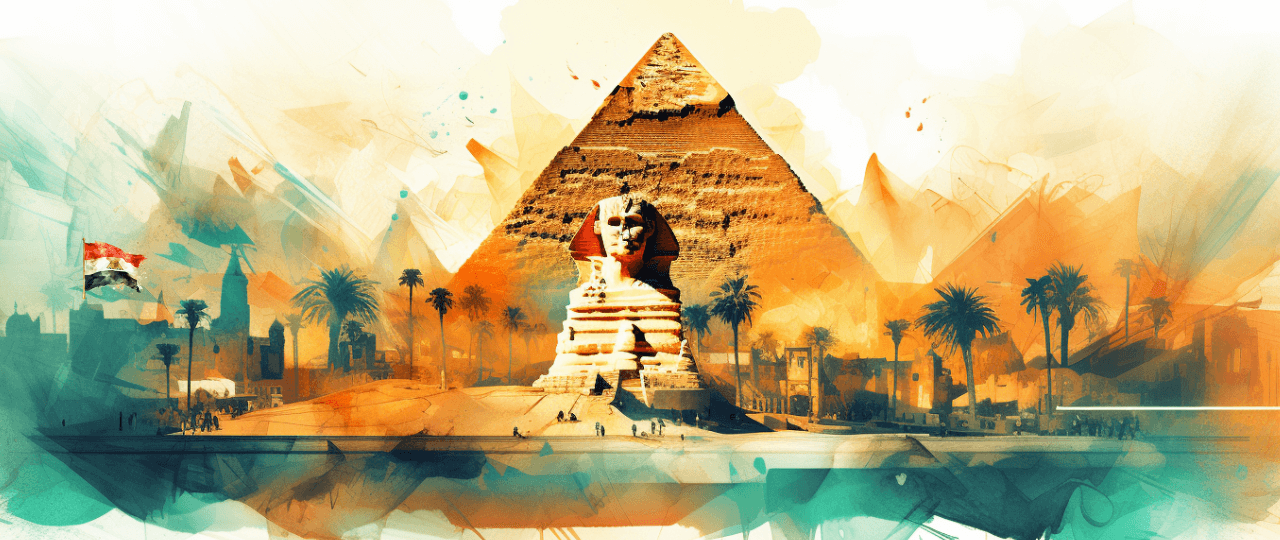Situated at the crossroads of ancient civilizations, Cairo and Giza are the dazzling gems of Egypt that offer travelers a mesmerizing blend of history and modernity. Rising from the sands of time, Cairo, the bustling heart of Egypt, pulsates with vibrant energy, echoing tales of pharaohs, sultans, and explorers. Just a stone’s throw away, Giza, home to the iconic pyramids and the enigmatic Sphinx, remains a powerful symbol of mankind’s architectural prowess and artistic ingenuity.
Cairo and Giza’s significance and allure are deeply rooted in their extraordinary tapestry of archaeological wonders and rich cultural narratives. While Cairo is enchanted with its labyrinthine bazaars, historic mosques, and world-class museums, Giza beckons with its ancient monuments that testify to humanity’s timeless ambition.
In this article, we invite you on a riveting journey to unearth the profound essence of Cairo and Giza. Whether you’re an avid historian, a culture enthusiast, or simply an intrepid traveler, these twin cities promise unparalleled adventures where millennia-old stories intertwine seamlessly with the contemporary. Dive deep into the heart of Egypt’s legacy with us as Cairo and Giza continue to bewitch wanderers from all horizons, crafting memories that last an eternity.
Must-see Attractions in Cairo and Giza
The Pyramids of Giza
Rising majestically from Giza’s plateau, the Great Pyramid stands as an enduring testament to ancient Egypt’s architectural genius. Its colossal stature and precise alignments are both a marvel of engineering and a symbol of the nation’s old prestige, earning it recognition as one of the timeless wonders of the world.
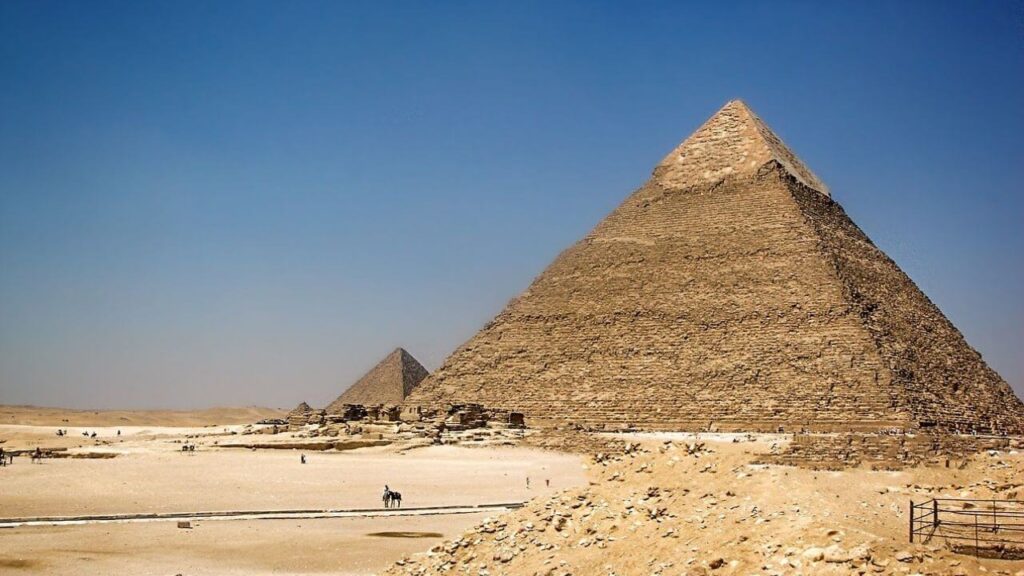
Pyramid of Khafre:
Marked by its iconic remaining limestone casing at the top, the Pyramid of Khafre radiates a timeless beauty, its silhouette a harmonious blend of human artistry and natural grandeur, enduring amidst the shifting sands of millennia.
Pyramid of Menkaure:
Though more modest in scale, the Pyramid of Menkaure exudes sophistication and elegance, showcasing that even in its more reserved dimensions, the craftsmanship and vision of ancient Egyptian builders were unparalleled.
The Sphinx
Guarding the Giza plateau with an enigmatic presence, the Sphinx is an architectural marvel and an emblem of Egypt’s ancient grandeur. This monumental sculpture, carved from a single limestone ridge, represents a fusion of human and lion attributes, symbolizing intelligence and strength. Its human face, traditionally believed to resemble Pharaoh Khafre, bears silent witness to millennia of history, while its lion body stands in a poised, regal stance.
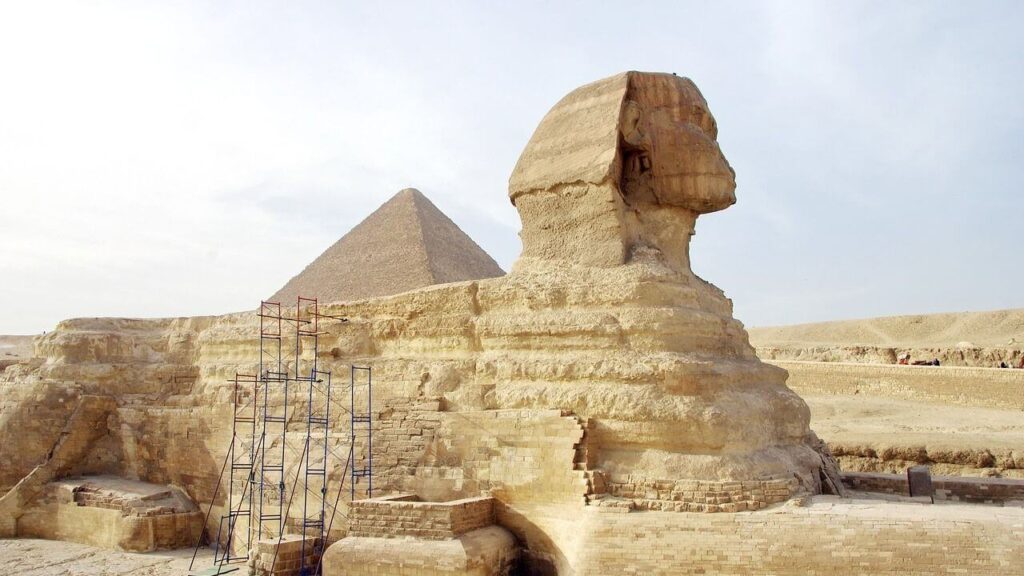
Numerous theories about its origin and purpose abound, adding layers of mystique. Weathered by time and elements, the Sphinx remains a sentinel of Egypt’s enduring legacy, captivating visitors’ imaginations from across the globe.
The Egyptian Museum
Situated in Cairo’s heart at Tahrir Square, the Egyptian Museum is a treasure trove of antiquities, offering a deep dive into millennia of Egyptian history. Its extensive galleries display an unrivaled collection of artifacts, with the golden treasures of Pharaoh Tutankhamun standing as its crown jewel. Beyond being a museum, this repository is a testament to Egypt’s rich tapestry of civilizations, ensuring that tales of pharaohs, queens, and ancient gods remain eternal. A visit here is a journey through time, bringing to life the epochs that have shaped the course of human civilization.

Note: At this point, the Egyptian Museum is half empty due to the relocation. The new location will be near the Pyramids in Giza. However, there are still items to see in the museum, such as the Mask of Tutankhamun and other significant relics. By 2024, the museum should be completely relocated to the new location.
Khan El Khalili Bazaar
Nestled within the winding alleys of historic Cairo, Khan El Khalili Bazaar is a vibrant testament to the city’s rich tapestry of commerce and culture. This sprawling marketplace pulsates with life, offering a sensory kaleidoscope of sights, sounds, and scents. Visitors can weave through stalls laden with intricate handicrafts, glittering jewelry, and aromatic spices, each telling tales of traditions passed through generations.
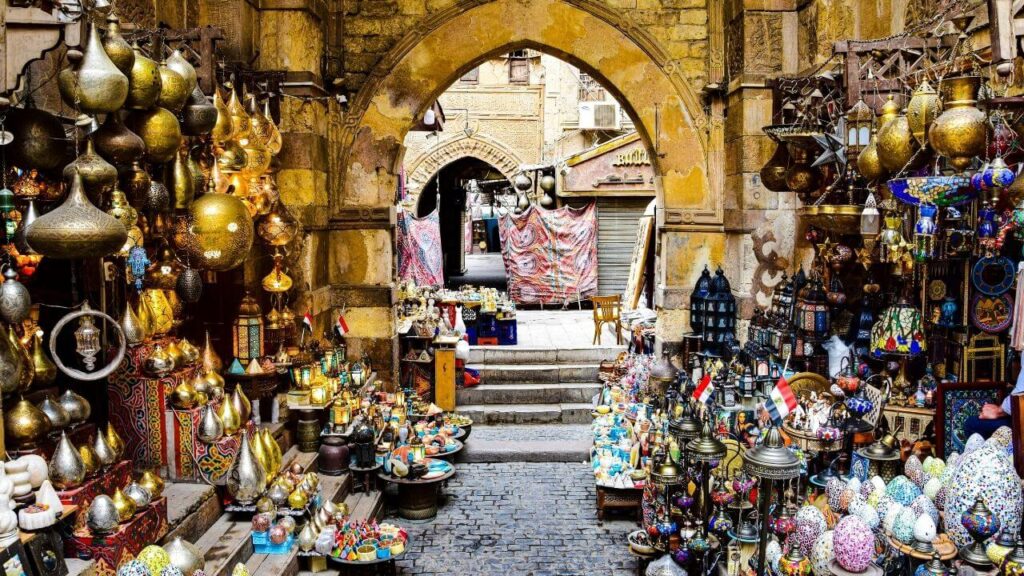
But beyond the treasures for purchase, the bazaar’s soul lies in its time-honored tea houses. Here, amidst wafts of sweet mint tea and the hum of local chatter, one can truly immerse in the timeless rhythm of Cairo’s heart, savoring a slice of its enduring spirit.
The Citadel of Saladin
Perched high above the bustling streets of Cairo, the Citadel of Saladin stands as a stoic sentinel, echoing tales of battles, leadership, and architectural brilliance from the annals of Islamic history. Constructed as a formidable fortress, this medieval marvel served as a defensive stronghold and a symbol of power and authority. Today, visitors are drawn not only by its ancient walls but also by its breathtaking panoramic views of Cairo’s sprawling expanse. Within its confines, the Mosque of Muhammad Ali takes center stage. With its towering minarets and intricate domes, this architectural masterpiece captures the essence of Islamic art and devotion, making the Citadel a confluence of history, faith, and unparalleled beauty.
Coptic Cairo
Nestled within the sprawling metropolis of Cairo lies a district steeped in early Christian heritage: Coptic Cairo. With its narrow, cobblestone alleys and aged structures, this enclave is a living tapestry of Egypt’s rich Christian past. Dominating the skyline is the Hanging Church, an architectural gem suspended above Roman ruins, its intricate wooden ceilings and religious icons telling stories of faith and perseverance.
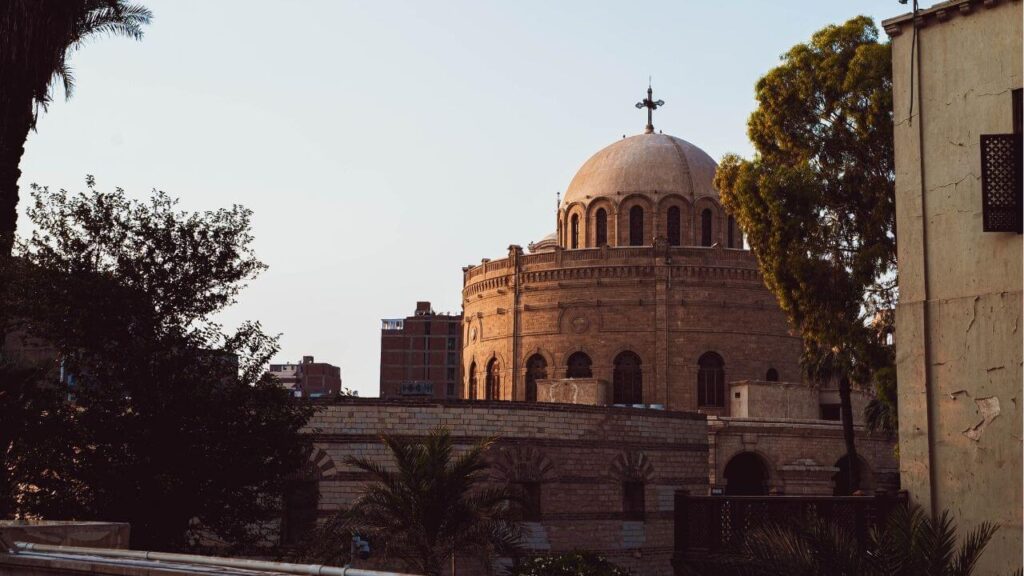
Just a stone’s throw away is the Coptic Museum, housing a treasure trove of art and manuscripts that chronicle Egypt’s Christian history. Meanwhile, the Ben Ezra Synagogue, once a church, is a testament to the area’s diverse religious tapestry. Visiting Coptic Cairo offers a profound journey into centuries of devotion, artistry, and coexistence.
Al-Azhar Park
Al-Azhar Park is a verdant sanctuary in the heart of bustling Cairo that offers respite from the city’s energetic pace. Created as an endeavor to introduce green spaces to the urban sprawl, this park beautifully juxtaposes the modern with the ancient. Lush landscapes adorned with fountains and serene water features invite visitors to wander and unwind. Meandering paths lead to vantage points that bestow breathtaking panoramas of Cairo, where the silhouettes of historic mosques punctuate the horizon, juxtaposed against the city’s contemporary skyline. Al-Azhar Park is not just a green haven; it’s a harmonious blend of nature and architecture, providing a tranquil retreat and a window into the soul of Cairo.
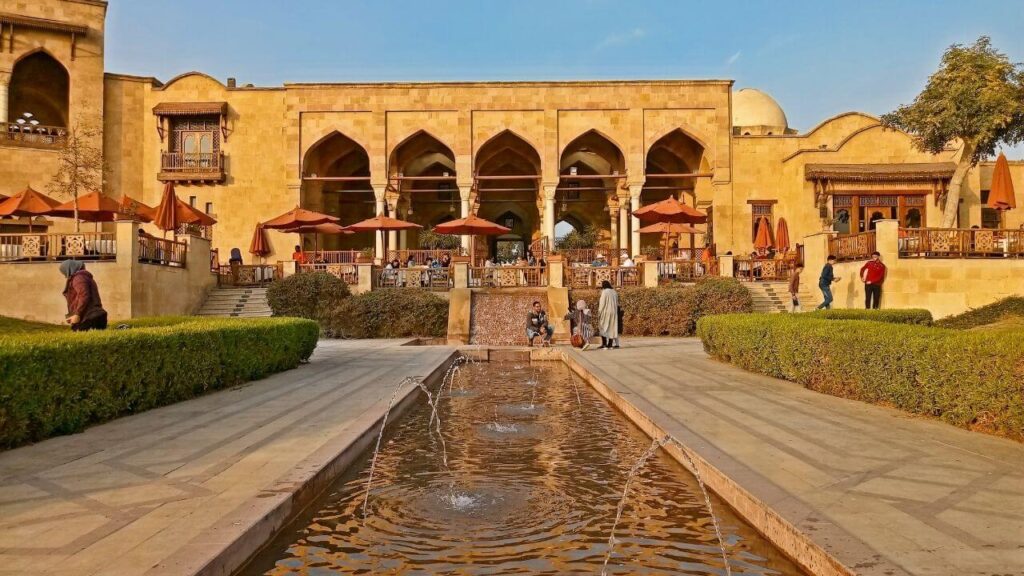
Tahrir Square
- The epicenter of the 2011 Egyptian Revolution, it’s a significant modern historical site.
- Saqqara:
- Situated a bit south of Giza, this vast ancient burial ground features numerous pyramids, including the Step Pyramid of Djoser, one of the oldest stone structures in the world.
- Downtown Cairo:
- Wander through the historic streets, experience the architecture from the late 19th and early 20th centuries, and visit the bustling squares and cafes.
There are many things to visit and see in Cairo; you can read our 30 Things to do in Cairo.
Adventure and Outdoor Activities
Desert Safaris
If you are an adventurer, then Desert Safari is what you must do in Egypt.
Location: The vast desert expanses around Giza and the outskirts of Cairo.
Experience: Adventure seekers can hop onto 4×4 vehicles or quad bikes to explore the dunes, oases, and sometimes ancient desert ruins. These safaris often include pit stops at significant spots, allowing you to immerse yourself in the desert’s raw beauty.
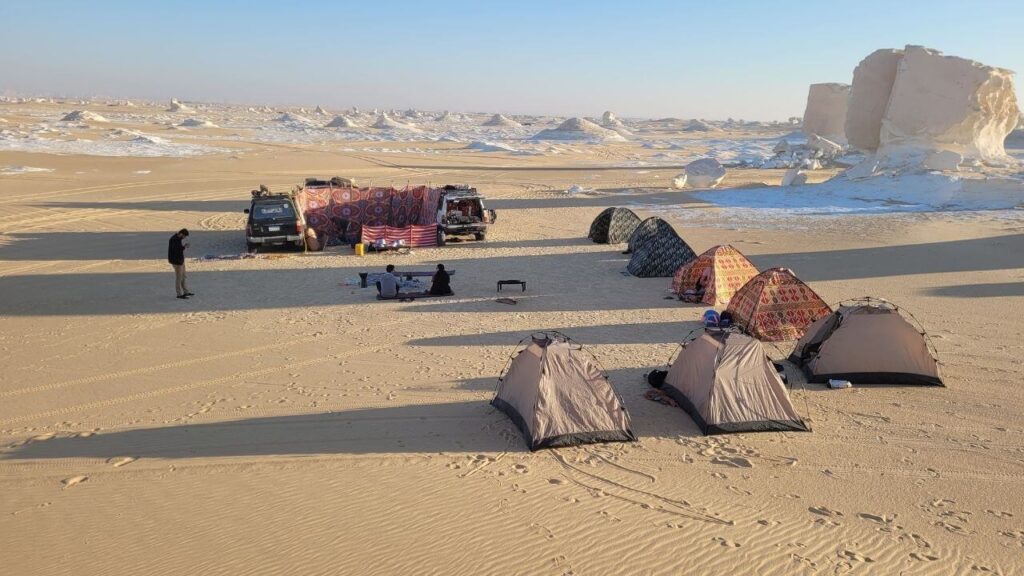
Tips for Travelers: Dress in layers as the desert can get cool, especially in the evenings. Wear sunglasses and a hat. Ensure you’re with a reputable tour operator for safety and an authentic desert experience.
Camel Rides
Location: Primarily around the Giza Pyramids and some desert areas.
A more traditional and relaxed way to explore, camel rides take you back in time. Ride alongside the iconic pyramids and capture unforgettable photos from unique vantage points.
Tips for Travelers: Wear comfortable clothing that covers the legs to prevent choking. Be respectful to the camels; ensure they are well-treated and not overworked. Choose providers who maintain good animal welfare standards.
Nile Cruises
Location: The Nile River that flows through Cairo.
Experience: Embark on a journey through the heart of Egypt on the Nile. Witness the bustling life of Cairo from the water, enjoy onboard entertainment, and often dine under the stars.

Tips for Travelers: Opt for evening cruises to escape the daytime heat and enjoy Cairo’s illuminated skyline. Some cruises include traditional dance and music performances, so check in advance to pick one that aligns with your interests.
Day Trips and Nearby Attractions
Memphis and Saqqara
Memphis: Once the ancient capital of Egypt, Memphis is home to colossal statues of Ramses II and a museum displaying artifacts from the area.
Saqqara: The step pyramid of Djoser, one of the world’s oldest stone structures, is located here. Saqqara is a vast ancient burial ground with numerous pyramids and tombs.
Travel Tip: Both Memphis and Saqqara can be explored in one day due to their proximity to each other.
Dahshur Pyramid
Less frequented than the Giza Pyramids, Dahshur offers a more serene exploration experience. The Bent Pyramid and the Red Pyramid are the primary attractions here.

Travel Tip: Wear comfortable shoes, as the terrain can be sandy and uneven.
Fayoum Oasis
Just a couple of hours away from Cairo, Fayoum offers a blend of natural beauty and ancient history. The region boasts waterfalls, lakes, dunes, and ancient ruins.
Attractions: Wadi El-Rayan, Lake Qarun, and the ruins of Karanis.
Travel Tip: If visiting in the warmer months, bring a hat, sunscreen, and plenty of water.
Alexandria
Located on the Mediterranean coast, Alexandria is Egypt’s second-largest city, known for its rich history and diverse culture.
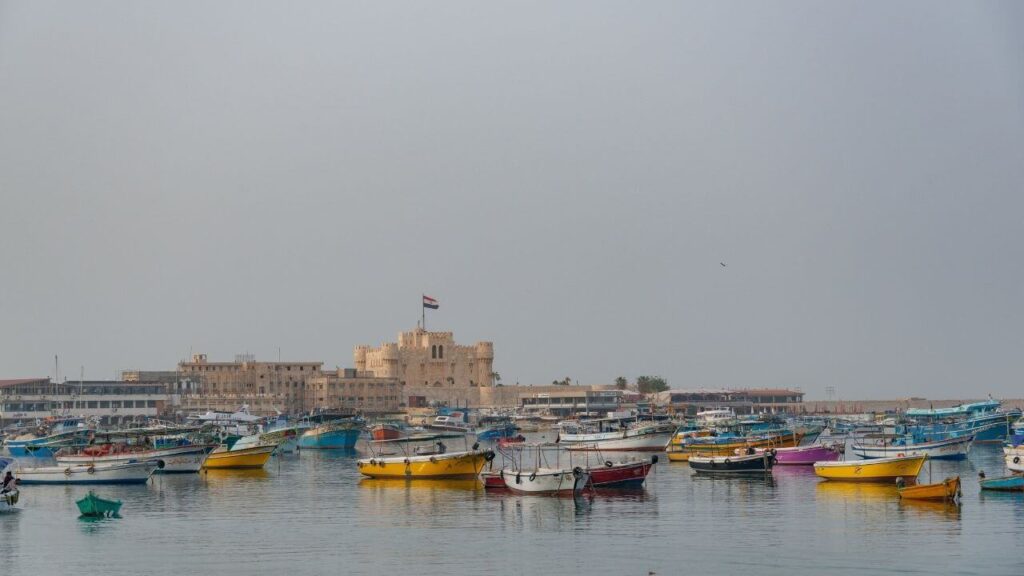
Attractions: The Catacombs of Kom El Shoqafa, Qaitbay Citadel, the modern Bibliotheca Alexandrina, and Montaza Palace.
Travel Tip: The journey can take around 2-3 hours each way, so it’s best to start early.
Wadi Natrun Monasteries
A cluster of Christian monasteries located in the desert between Cairo and Alexandria. It’s a spiritual haven and an insight into early Christian monastic life.
Travel Tip: Ensure modest clothing when visiting, as these are active religious sites.
Red Sea Resorts
While a bit farther than other day trips, towns like Ain Sokhna on the Red Sea can offer a refreshing change from the city. Here, you can enjoy beaches and water sports.
Tips for Travelers
Guided Tours: For many of these destinations, hiring a guide can greatly enrich the experience, offering historical and cultural insights.
Transportation: While public transport is available to some locations, private car hires or organized tours might be more comfortable and efficient for day trips.
Stay Hydrated: Always carry water, especially when venturing into desert areas.
Whether you’re in the mood for historical sites, natural wonders, or seaside relaxation, the regions around Cairo and Giza offer an array of options to cater to various interests.
Best Time to Visit Cairo and Giza
Cairo and Giza, gateways to Egypt’s millennia-old history, offer intriguing experiences year-round. However, the best time to explore their wonders largely depends on your preferences regarding weather and crowd density. Here’s a guide to help you decide the optimal time for your journey to these ancient realms:
Winter (December to February)
Weather Conditions: Winter is the prime season for travelers in Cairo and Giza. During this period, temperatures hover between 15°C to 22°C (59°F to 72°F). Although the days are mild, nights can become quite chilly.
Recommended Travel Periods: December to February is perfect for those aiming to explore the Pyramids of Giza, the Egyptian Museum, and Cairo’s bustling streets without enduring the extreme heat of summer.

Spring (March to May)
Weather Conditions: Spring witnesses a gradual rise in temperatures, typically ranging from 20°C to 30°C (68°F to 86°F). However, the infamous ‘khamaseen’ sandstorms might occur.
Recommended Travel Periods: March to early April is preferable for warmer days without the peak summer heat. Be cautious of sandstorms, which are common, especially in April.
Summer (June to August)
Weather Conditions: Summers in Cairo and Giza are hot and dry. Temperatures frequently rise above 35°C (95°F), sometimes even reaching 40°C (104°F).
Recommended Travel Periods: This period may suit budget travelers due to lower tourism rates. If you venture during summer, schedule visits to the pyramids and outdoor sites either early or late afternoon to evade the scorching sun.
Fall (September to November)
Weather Conditions: Fall brings a decline in temperatures, offering a range from 25°C to 35°C (77°F to 95°F), making it more comfortable for tourists.
Recommended Travel Periods: September to November is excellent for those wishing to explore Cairo and Giza’s treasures under milder conditions and before the winter crowds surge.
Always remember, regardless of the season, early morning visits to iconic landmarks like the pyramids allow for a more peaceful and excellent experience.
Getting There and Around
International Travel Options to Egypt
By Air:
Cairo International Airport (CAI) is the leading international hub for Egypt. Situated in Heliopolis, northeast of the city center, it caters to numerous international airlines connecting Egypt with significant cities worldwide. Upon landing, you can opt for taxis, buses, or ride-sharing services to reach your desired destination.
Domestic Travel to Giza
By Road:
Being contiguous with Cairo, Giza can be accessed easily via taxi, bus, or ride-sharing services like Uber and Careem. The trip is relatively short, especially when traveling from central Cairo.
By Metro: The Cairo Metro has a line extending to Giza, providing an economical and relatively fast method of reaching the pyramids and other attractions.
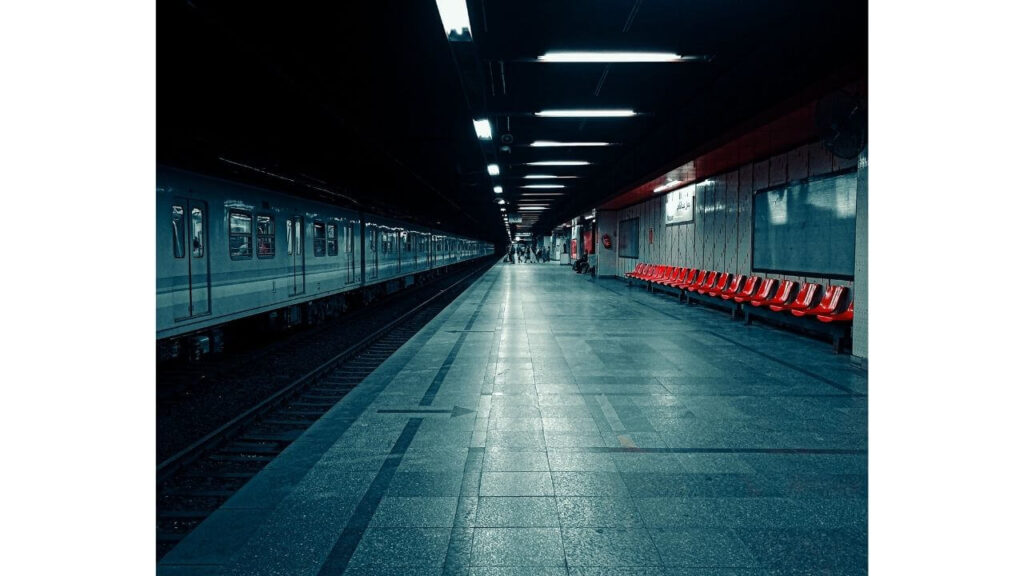
Local Transportation Options in Cairo and Giza
Taxis: Taxis are abundant in both Cairo and Giza. Always ensure to agree on a fare beforehand or insist on the use of the meter.
Microbuses & Buses: A popular means of transport, microbuses and buses cover various routes. While they’re economical, they may be confusing for first-time visitors.
Metro: The Cairo Metro is efficient and covers significant parts of the city. It’s a quick way to avoid the often congested roads.
Ride-sharing Services: Both Uber and Careem operate extensively in Cairo and Giza, providing a convenient, safe, and often cost-effective mode of transportation.
Walking: Certain districts in Cairo, like Zamalek and Downtown, are pedestrian-friendly. Giza’s pyramid complex can also be explored on foot, although it’s vast, so one should be prepared.
Horse and Camel Rides: In Giza, near the pyramids, you can opt for horse or camel rides for a more traditional touring experience.
Nile Ferries and Feluccas: To experience the Nile River’s charm, consider a ferry ride or rent a felucca, especially during the evening, for a serene sunset view.

Navigating Cairo and Giza is an experience blending the pulsating energy of modernity with timeless history. Whatever your mode of transport, the journey through these cities promises to be as memorable as the destinations.
Accommodation in Cairo and Giza:
Cairo and Giza, as the heartbeats of Egypt’s historical and modern narratives, boast accommodations spanning a vast spectrum of styles and budgets. Here’s a guide to the myriad options, tailored to ensure every traveler finds their perfect haven:
Budget Accommodations Hostels and Guesthouses
Overview: Both Cairo and Giza have a slew of guesthouses and hostels catering to the needs of backpackers or those traveling on a shoestring.
Traveler’s Tip: Opt for ones near popular attractions for easy access and added convenience.
Budget Hotels
Overview: Numerous affordable hotels, often enriched with local character, dot the landscapes of Cairo and Giza.
Traveler’s Tip: Inquire about rooms that provide a view of the pyramids or the Nile for an unforgettable stay.
Mid-Range Accommodations Boutique Hotels
Overview: Unique and intimately styled boutique hotels offer guests a blend of Egyptian aesthetics and modern comforts.
Traveler’s Tip: Book ones that are housed in historic buildings for a step back in time.
3- and 4-Star Hotels
Overview: These establishments are plentiful, with many featuring amenities such as pools, dining options, and stunning city views.
Traveler’s Tip: Look for ones with cultural events or traditional Egyptian nights for added entertainment.
Luxury Accommodations 5-Star Hotels and Resorts
Overview: From iconic palatial hotels by the Nile in Cairo to opulent resorts overlooking the pyramids in Giza, luxury abounds.

Photo Source: Tripadvisor
Traveler’s Tip: Indulge in a suite with a balcony for panoramic views of the city’s wonders.
Recommendations for Immersive Experiences Historical Stays
Consider accommodations in Cairo’s historic district or near Giza’s pyramids for a more authentic and enriching experience.
Local Homestays: Delvess into the essence of Egyptian culture by staying with a local family. This experience provides a rare glimpse into Egyptians’ daily life and customs.
Rooftop Views: Stay in accommodations that offer rooftop lounges or terraces, which are excellent vantage points to watch the sun set behind the pyramids.
Traditional Mansions: Several old mansions in Cairo have been transformed into boutique hotels. Staying in them offers a deep dive into the city’s architectural splendor.
Culture-Centric Stays: Opt for accommodations that curate experiences, from Egyptian cooking classes to local music nights, ensuring a culturally immersive visit.
Whether one desires the allure of age-old Egypt or the vibrant cosmopolitan vibe of modern-day Cairo and Giza, accommodations cater to every whim and fancy. Choosing the right place is the first step to a memorable Egyptian odyssey.
Food and Beverage in Cairo and Giza
In the pulsating heartbeats of Egypt, Cairo, and Giza stand as historic epicenters and culinary capitals that draw on millennia of trade, conquest, and culture. Here’s a deep dive into the gastronomic delights these cities offer:
Traditional Dishes
Koshary: Often hailed as Egypt’s national dish, this hearty combination of rice, macaroni, lentils, chickpeas, fried onions, and spicy tomato sauce is delicious and filling.

Molokhia: A green soup made from finely chopped jute leaves, often prepared with rabbit or chicken and flavored with garlic and coriander.
Mahshi: Vegetables like zucchinis, bell peppers, and grape leaves stuffed with a compelling mix of rice and herbs, simmered in tomato sauce.
Fattah: A festive dish made from layers of rice, bread, and meat (often lamb), drenched in tomato and vinegar sauce.
Ta’meya (Falafel): Made from fava beans in Egypt (instead of chickpeas found elsewhere), these deep-fried balls are crispy outside and fluffy inside, usually served in bread with veggies and tahini.
Bread and Pastries Aish Baladi
Egypt’s version of pita bread is slightly chewy, made from whole wheat, and often accompanies most meals.

Basbousa: A sweet semolina cake soaked in syrup and often adorned with an almond on top.
Feteer: A flaky pastry that can be both savory (filled with cheese or minced meat) or sweet (stuffed with honey, nuts, or sweet cream).
Beverages Karkade (Hibiscus Tea)
A deep red, tangy drink made from dried hibiscus flowers. It can be enjoyed both hot and cold.
Sahlab: A warm, creamy drink made from ground orchid tubers, flavored with cinnamon and topped with nuts.
Sugarcane Juice: Freshly squeezed and refreshingly sweet, this juice is a popular drink found in many street corners.
Eateries to Explore Cafes
Traditional cafes, or “ahwas,” are not just places to sip tea and smoke sheesha. They are cultural institutions echoing tales of yesteryears and current affairs.
Street Vendors
For an authentic experience, indulge in street food. From crispy falafels to juicy shawarmas, the streets of Cairo and Giza brim with flavors.
Fine Dining
Over the years, Cairo, in particular, has seen a surge in upscale restaurants offering Egyptian and international cuisine with a contemporary twist.

Local Markets
Places like Khan El Khalili in Cairo offer an array of local produce, spices, and traditional treats. Don’t miss the chance to haggle and taste simultaneously!
Tips for Travelers
Stay Hydrated: Cairo and Giza can get hot. Opt for bottled water and avoid ice in your drinks to stay safe.
Respect Local Customs: While Egypt is more liberal than some neighbors, avoiding excessive public drinking is still best.
Try Everything: Egyptian cuisine is diverse. Don’t be shy about diving into the local gastronomic scene.
Cairo and Giza offer a culinary journey through time, with every dish narrating a story of civilizations, trade, and traditions. So, savor every bite and sip, and let your taste buds explore the rich tapestry of Egyptian flavors.
Shopping in Cairo and Giza
Traditional Markets and Bazaars
Street of the Tentmakers (Sharia Khayamiya): A lesser-known gem, this street is home to artisans creating and selling beautiful hand-stitched appliqué crafts, often used for decorative tents or wall hangings.
Modern Shopping Malls
Cairo Festival City Mall: In New Cairo, this modern shopping complex offers many international and local brands, dining options, and entertainment facilities.
Mall of Egypt: Situated on the 6th of October City, this mall boasts numerous shops, a ski park, and a vast food court catering to diverse tastes and preferences.
Local Crafts and Souvenirs
Alabaster Artifacts: These are typically hand-carved and can range from tiny trinkets to large statues.
Papyrus Scrolls: Often depicting ancient Egyptian scenes and hieroglyphs, these make for a great keepsake.
Perfumes: Cairo has a rich history in perfume-making. Visitors can purchase traditional fragrances in ornate bottles.
Fashion and Textiles
Cotton: Egypt is known for its high-quality cotton. Products like bedsheets, towels, and clothing made from Egyptian cotton are sought after for their softness and durability.
Traditional Attire: Galabiyas, the traditional Egyptian robe, can be found in various colors and designs.
Jewelry
Gold and Silver: The Gold Souk in Cairo is a must-visit for those looking to buy jewelry. Whether it’s traditional designs or modern pieces, the craftsmanship is outstanding.

Tips for Travelers
Bargaining: Haggling is integral to shopping, especially in traditional markets. Start with offering half the quoted price and negotiate from there.
Be Aware of Replicas: While many genuine artifacts are for sale, there are also numerous replicas. Knowing what you’re purchasing is essential, especially with items like papyrus and antiques.
Local Currency: While some larger stores accept credit cards, having Egyptian pounds on hand is a good idea, particularly in bazaars.
Shopping in Cairo and Giza offers a delightful blend of the old and the new, allowing visitors to immerse themselves in the culture while finding unique treasures to take home.
Festivals and Events in Cairo and Giza
Cairo International Film Festival (CIFF)
Established in 1976, CIFF is one of the oldest film festivals in the Middle East. Held annually, it showcases a rich array of international films and spotlights Arab cinema.
Traveler’s Tip: A must-attend for film enthusiasts, you can catch screenings, workshops, and panels. Make sure to book your tickets in advance, as popular screenings often sell out.
Moulid of Sayyid Ahmed al-Badawi
This religious festival celebrates the birth of the Islamic saint Sayyid Ahmed al-Badawi. It features parades, traditional Sufi music, and dance performances.

Traveler’s Tip: Respect local customs, dress modestly, and enjoy the soul-stirring music and vibrant processions.
Cairo Jazz Festival
An annual celebration of jazz from Egypt and worldwide, this festival, held over several days, features performances from renowned international and local artists.
Traveler’s Tip: If you love music, especially jazz, check the schedule and book your tickets early. Venues often get packed.
Cairo Bites
Egypt’s largest food festival showcases delicacies from every corner of the country, gourmet cuisine, street food, and cooking demonstrations.
Traveler’s Tip: Come with an appetite! This is a fantastic way to sample a vast array of Egyptian culinary delights in one place.
Islamic and Coptic Holidays
Like the rest of Egypt, Cairo and Giza celebrate various Islamic and Coptic Christian holidays. These include Ramadan, Eid al-Fitr, Eid al-Adha, and Coptic Easter.
Traveler’s Tip: While the festive atmosphere during these holidays is vibrant, be aware of changes in business hours and potential closures of some attractions.

Sound and Light Shows at the Pyramids
The ancient pyramids come alive during these captivating evening shows that tell the story of ancient Egypt through lights, sounds, and narrative.
Traveler’s Tip: If you stay in Giza, don’t miss this spectacle. Bring a light jacket or shawl, as evenings can get relaxed.
Cairo International Book Fair
One of the largest and oldest book fairs in the Arab world, this event attracts publishers, authors, and book lovers from all over the globe.
Traveler’s Tip: Apart from books, there are often cultural performances, lectures, and workshops. It’s a haven for literature enthusiasts.
Cairo and Giza’s event calendar is teeming with festivals that reflect the region’s rich tapestry of culture, religion, and arts. A celebration or event will likely enhance your Egyptian experience whenever you visit. Check local listings and plan your itinerary to catch these vibrant displays of Cairo and Giza’s enduring spirit.
Nightlife and Entertainment
Traditional Dance and Music Performances
Cairo is a hub for rich cultural entertainment. One of the highlights is traditional Egyptian dance, including the famous belly dancing. Another is the spiritual Sufi dance, or ‘tanoura’, a whirlwind performance deeply rooted in Islamic tradition.
Where to Watch: Many hotels, especially the five-star ones, offer nightly shows. The El Ghouri Tannoura Dance Troupe in the historic district of Fatimid Cairo is particularly renowned for its authentic Sufi performances.

Tips for Travelers: While most performances are tailored for tourists, they maintain a deep respect for their cultural roots. As such, it’s a good idea to dress modestly when attending.
Best Places for Nightlife
Cafes: Cairo’s cafes come alive at night, with locals and tourists alike enjoying shisha and tea. The district of Zamalek has a plethora of riverside cafes offering a mix of traditional and modern vibes.
Bars and Pubs: While Egypt is predominantly Muslim, alcoholic beverages are available in various bars and pubs. Places like the Cairo Jazz Club and The Tap offer a mix of live music and DJ nights.
Nightclubs: There are several clubs in the city for those looking to dance the night away. Some of the popular ones include OPIA, a rooftop lounge and bar with panoramic city views, and 610 in Zamalek, known for its vibrant atmosphere.
Tips for Travelers: While Cairo’s nightlife is relatively liberal, it’s still essential to respect local customs. Public displays of affection should be minimal, and it’s always a good idea to dress smartly when heading out for the evening.
Cultural Etiquette and Tips
Common Local Customs and Behaviors
Respect for Religion Egyptians deeply value their religious traditions, whether they are Muslims or Christians. Whether you’re in Cairo’s bustling streets or near Giza’s ancient pyramids, always show respect for religious practices. Avoid interrupting or walking through groups that are praying.
Greetings: When meeting locals, a warm “al-salam ealaykum” (peace be upon you) is appreciated. A handshake is common among men, but wait for a woman to extend her hand first.

Hand Gestures: The right hand is favored for most interactions, including giving or receiving items. Avoid using your left hand, especially when sharing food or greeting someone.
Photography: Be sensitive when taking photographs. Historic sites often allow photography, but always ask before photographing locals. Some places may charge a fee for using a camera.
Dress Code: General Modesty Both Cairo and Giza are cosmopolitan, but conservative attire is still preferred. For men, it means avoiding shorts and sleeveless shirts. Women should consider wearing dresses or skirts that cover the knees and tops that cover the shoulders and chest.
Religious Sites: Women must cover their hair with a scarf when visiting mosques. Both men and women should wear clothing that covers their arms and legs.
Protection Against the Elements: The Egyptian sun can be intense. Always wear sunscreen, and consider a hat and sunglasses when touring outdoor sites.
Navigating Markets and Bazaars
Bargaining and Haggling are integral to shopping in Cairo and Giza, especially in places like Khan El Khalili Bazaar. Start by offering half or two-thirds of the initial price and negotiate. Always keep the interaction light-hearted.
Know Your Products: Whether you’re buying spices, textiles, or souvenirs, it helps to have a basic understanding of what you’re purchasing. This ensures you get quality products at reasonable prices.
Carry Cash: While some shops accept credit cards, many smaller bazaar stalls prefer cash. Ensure you have a mix of smaller denominations for easier transactions.
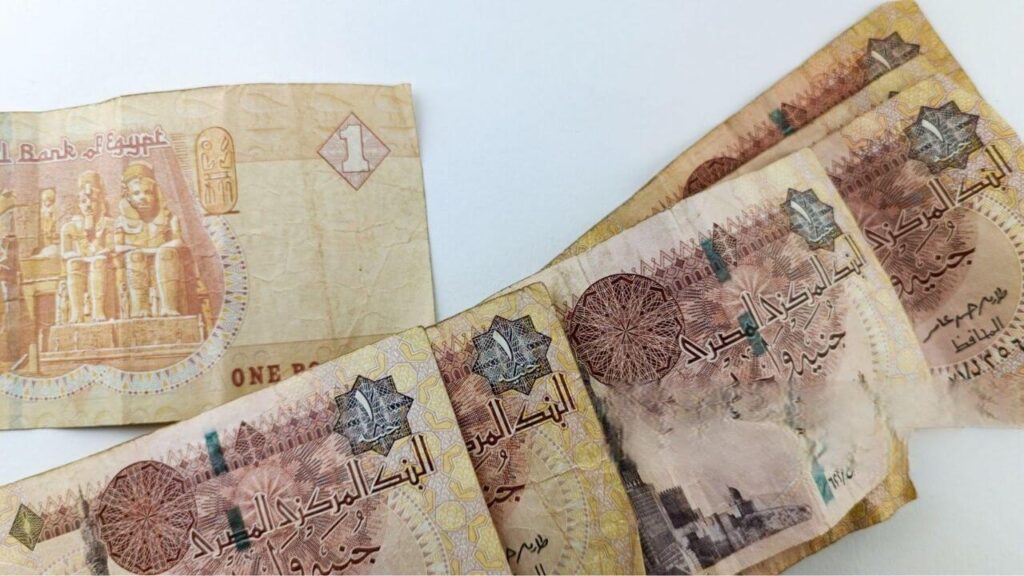
Respecting Traditions and Celebrations
If you’re visiting during religious holidays like Ramadan, remember that many locals will be fasting during daylight hours. It’s respectful to avoid eating, drinking, or smoking in public during this time.
While Cairo and Giza are modern metropolises but deeply rooted in age-old traditions. Being aware of and respecting these customs will enhance your experience and foster meaningful interactions with the locals.
Health and Safety
General Safety Considerations
Personal Belongings: Cairo and Giza are bustling areas with a mix of locals and tourists. Always be vigilant in crowded places, such as markets and major tourist attractions, to avoid potential pickpockets. Consider using anti-theft bags or inner pockets for essential items.
Traffic Safety: Traffic flow in both cities can be somewhat hectic. Always be cautious when crossing roads, even using a crosswalk. It’s often helpful to observe how locals navigate traffic and follow suit.
Health Precautions
Water Consumption: Always consume bottled water and avoid tap water for your safety. When ordering drinks, request no ice, as it might be made from tap water.
Food Precautions: Cairo and Giza offer a delightful culinary journey, but always choose restaurants and street vendors that appear clean and busy. Stick to hot, freshly cooked food, and avoid uncooked dishes or fruits that cannot be peeled.
Vaccinations: Before your trip, ensure that your routine vaccinations are up-to-date. It’s also recommended to consider vaccines for diseases like hepatitis A and typhoid. Consultation with a healthcare professional prior to your visit is always a wise step.
Avoiding Scams and Harassment
Harassment Concerns: Solo travelers, particularly women, might occasionally receive unwanted attention. Maintaining a confident demeanor and setting clear boundaries can deter most unwarranted advances.
Stay Updated: Always check for the latest travel advisories or guidelines from your country’s foreign affairs department before and during your stay in Cairo and Giza.
Local Contacts: Consider registering with your country’s embassy or consulate in Cairo upon arrival. They can offer valuable assistance in emergencies and provide essential updates if necessary.
Understanding Local Laws and Traditions
Alcohol Guidelines: Alcohol is available at licensed establishments, but public consumption is frowned upon. Always drink responsibly and be aware of cultural sensitivities.
Etiquette at Religious Locations: When visiting mosques or religious landmarks, ensure you’re dressed modestly. For women, this often means wearing a scarf over the head. For both genders, covering the arms and legs is usually expected.
Photographic Courtesy: While the architecture and culture might be captivating, always request permission before photographing locals, especially in non-touristy zones. Some might expect a small gratuity in exchange for a photo.
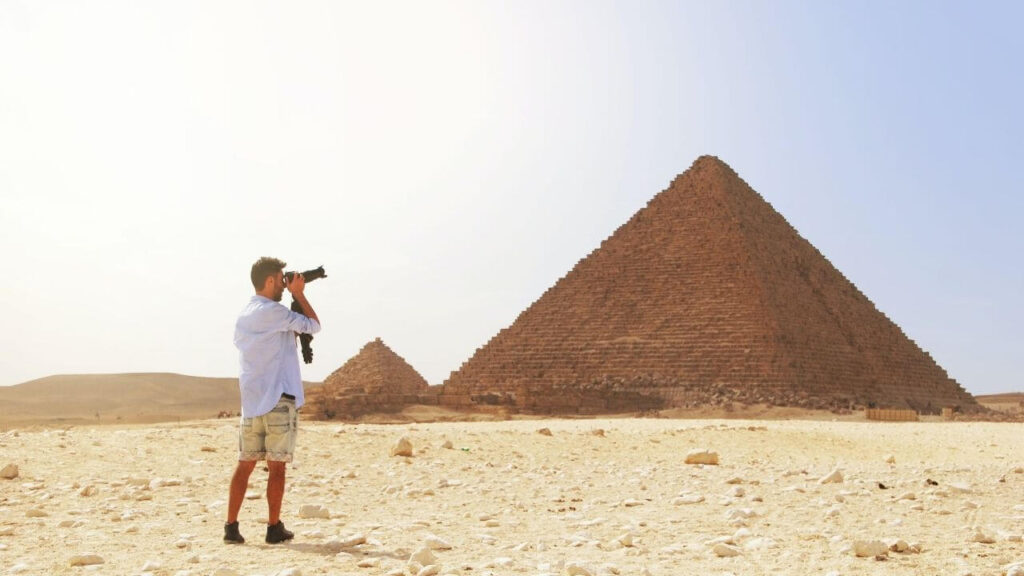
While Cairo and Giza are generally safe for tourists, being cautious and respectful of local customs and norms will ensure a pleasant and memorable trip.
The story about The Whispered Secrets of the Pyramid Builders
In the shadow of the Giza pyramids, legends tell of Imhotep, a brilliant architect who wasn’t just skilled in stone but also in the secrets of the heavens. While the grandeur of the pyramids is known worldwide, few are familiar with the mysterious tale of the “Stellar Map.”
While formulating the design for the pyramids, Imhotep was frequently visited by a mysterious old man in his dreams. This man believed to be the ancient god Thoth, whispered celestial secrets to Imhotep, guiding him to align the pyramids with Earth’s compass points and the stars.
Inspired, Imhotep embedded a unique design into the pyramids. They were constructed to mirror the constellation Orion, symbolizing Osiris, the god of the afterlife. The three pyramids align with Orion’s Belt, and the Nile corresponds to the Milky Way, creating a celestial map of Earth.
This remained a whispered secret for centuries, with only a select few privy to this knowledge. But today, with modern astronomy, the brilliance of Imhotep’s design has been unveiled.
Now, tourists visiting Giza during specific times of the year can witness this cosmic alignment. As night falls and Orion rises, the pyramids shimmer under the starry sky, whispering their stellar secrets to those who listen.

